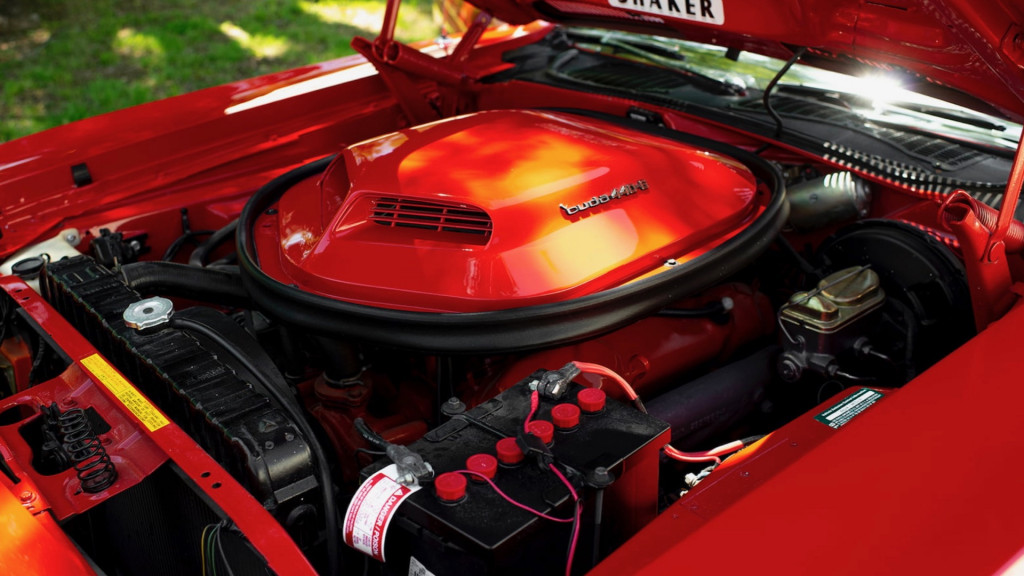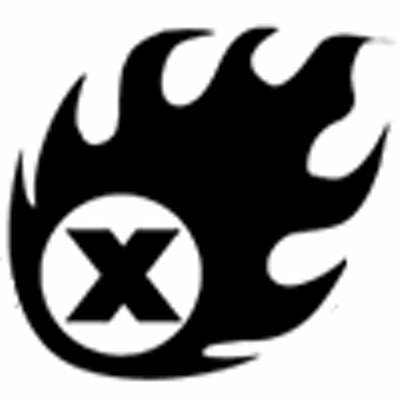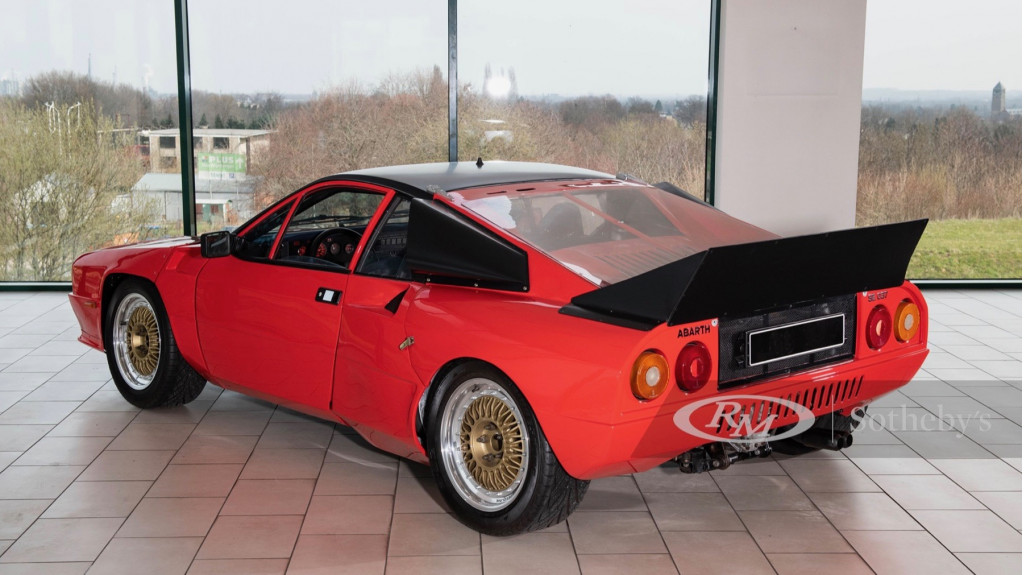With huge performance potential on tap, it’s unsurprising that we’ve seen many a modified BMW M135i, but few people have taken this hot hatch to the hardcore next level and focused it into a ferocious track machine…
Feature taken from Performance BMW. Words: Elizabeth de Latour. Photos: Adrian Brannan
We still remember the first time we sampled the BMW M135i: its combination of performance and sheer driving pleasure left a big impression on us and we totally get the appeal. Impressive as it is when stock, once you start tapping into its substantial modding potential it really comes alive but few owners out there have turned up the heat on this spicy hot hatch quite as much as Duncan Bryce has.
“Since my early teens I was always interested in BMWs, purely because they were the only cars my dad has owned since the early 2000s,” Duncan tells us as we chat. “I always remember walking around the dealerships with him looking at all the new models and talking about what ones we liked and disliked. He has had a few over the years ranging from his first E91 318i Touring to an E82 123d and his recent F31 340i Touring, which has now been replaced by an F20 M140i, which always keep things interesting. Growing up surrounded by BMWs it gravitated my own choice towards owning a few of my own and when it was my turn to have the showroom experience, I knew it was a trip to BMW,” he grins. After owning and modding a 1.4TSI VW Scirocco he was looking for his next project and so went to sample a selection of cars at his local BMW dealership, where a member of his family worked; it was the 2 Series that caught his eye and a test drive in an M235i saw him smitten and taking it home with him shortly after.

Having modded the Scirocco, Duncan wasn’t shy about getting stuck in with the mods on his BMW M235i and ended up adding a de-cat, JB4, Cobra Sport exhaust, OZ Formula wheels along with a selection of M Performance carbon styling goodies. Sadly, it ended up in an accident and that left him wondering what could fill the M235i-shaped hole in his life. After buying a diesel Audi A5 and feeling unsatisfied, it was a stint behind the wheel of his partner’s 118d M Sport that made him realise he needed another BMW. “As I had previous experience with the N55 engine and knew what potential it had I began looking at the BMW M135i as it ticked all the boxes. After a few weeks of research, I found this one, which had already been modified with some parts that would start my journey and the freshly detailed shine on the Valencia orange paint had me hooked,” he grins.
N55 power
As Duncan mentioned, his new acquisition already came pre-modified with a few tasty additions, which included H&R lowering springs, 763M wheels, carbon mirror caps, gloss black grilles and a Maxton Design splitter, but considering how much work he’d put into his modified BMW M235i it was clear that there was going to be more to come. “As soon as I got the car back home I knew the first modification would be to get a good set of tyres on the wheels and fitted a set of Michelin PS4Ss on it to get some proper grip. Next, I fitted a JB4 and de-cat for some power as that was the big thing at the time and, after that, I added an exhaust and a spoiler, and that was as far as I had originally planned to take the car. However, after a trip to the Nürburgring in June 2018, I was fixed on turning it into a track car,” he explains and so the focus for the project was set.

The modified BMW M135i has been continuously evolving both before Duncan’s decision to go down the track route and since and the amount of work that he has put into every area of this build to fine-tune and find his perfect setup is very impressive, and that obviously includes the engine. Having had experience with tuning the N55 before in his M235i, Duncan knew where to start, fitting the aforementioned JB4, along with a Pipercross filter and Scorpion de-cat downpipe, which combined to make around 400hp, before adding an M Performance back box. He then added an uprated BMS intercooler and a Forge charge pipe as the standard plastic item is known to crack when increasing power and boost pressure. Up until this point, the JB4 had been fine but Duncan wanted more going forward; “I removed the JB4 box to flash the ECU with MHD as it was released for the F-series and had far more custom options for mapping and changing software such as linear maps, cold start delete, ethanol maps, maps for upgraded turbos and fuel pumps. There was so much more it could do over the JB4,” he explains.
Next on his shopping list was a better air intake: “I had looked at open cone intakes and read mixed reviews about them drawing in hot air from the engine due to the N55 platform not having a good feed of cold air to the intake. An aFe Magnum Force one then popped up for sale online at a good price so that was bought along with a new filter and then fitted to the car. Straight away I felt an improvement and the noise it made was addictive,” he grins and he’s since added his own custom cold air feed. Through all of this, Duncan was also experimenting with different exhaust setups, trying to find the right sound for him and we’ve all been there. After the M Performance setup, he tried a custom Y-pipe with Milltek tips, went back to the standard exhaust, and then decided to try a Cobra Sport non-resonated exhaust. “Considering I had dealt with Cobra before as my M235i was the development car and first M235i in the UK to be fitted with their exhaust, it was a no-brainer. It sounds amazing with the de-cat and the noise on wide-open throttle is startling,” he grins and there’s nothing more satisfying than finding your perfect setup. The final additions to his setup are a set of NGK spark plugs as he was experiencing misfires at wide-open throttle, a GFB DV+ blow-off valve and a one-piece mandrel-bent FTP turbo inlet pipe, which removes the restriction in the standard pipe and which Duncan says has made a huge difference to throttle response.

Modified BMW M135i: Chassis talk
Power is all well and good except it’s not if you can’t keep it all in check and that’s especially true if you’re heading for the track, so Duncan’s modified BMW M135i has been treated to an impressive selection of chassis upgrades beneath the surface. “When I purchased the car it was already on H&R lowering springs which gave it a far better look on the 19” wheels but the ride wasn’t suitable for the local roads,” explains Duncan. “After my trip to the Nürburgring in July 2018, I started looking at coilovers and it came down to either Bilstein or KW. A set of Bilstein B14s became available from a friend so I went for them,” and they offered a significant improvement over the springs but that was just the tip of the iceberg. To complement these, Duncan has added a set of Millway camber plates, H&R ARBs, Whiteline adjustable drop links, Direnza adjustable rear camber arms, along with Powerflex bushes in the radius arms, controls arms, rear subframe and LSD. This has been topped off with the car being corner-weighted and this comprehensive combo works to remove any and all slack in the chassis, making the car feel incredibly responsive and allowing Duncan to really enjoy his M135i both on the road and out on track. The coilovers also have the welcome benefit of allowing him to give his 1 Series a serious drop and he’s deleted all of the arch gap, which benefits both handling and looks, and he’s also added a set of striking and purposeful wheels that fit perfectly with the whole look and ethos of the build.

“At first I went for a set of Bola wheels as they offered custom offsets from the factory which meant I could get the perfect fitment to fill the arches. They also had a good variety of colours to suit the car and I also went to 18s, which were better suited to the track and had more tyre options available,” Duncan tells us. “I always said to myself I’d get a set of Apex EC-7 wheels as they were the top wheel for track applications and I had seen so many BMWs running them. I was convinced I’d get a set,” he chuckles. “A set then became available, an 8.5×18” ET35 square setup, not something I’d really considered though. After doing some reading up on square setups and working out if the offsets would fit I was excited to have them fitted onto the car. They were sent straight to Dust Powder & Paint to be powder coated in white as I wanted them to stand out,” he says and that they do thanks to that white finish, which we imagine is a complete pain to keep clean but it’s worth the effort as they look fantastic against the bold Valencia orange bodywork. The wheels are wrapped in super-sticky Yokohama AD08R rubber for maximum grip and traction and Duncan hasn’t forgotten about the brakes, either, with the standard blue calipers that sit behind them having been equipped with Pagid RS29 pads over MTEC C-hook discs and the stopping setup is finished off with HEL braided lines and Motul fluid.
When it came to exterior styling, Duncan says that he didn’t want to do too much as the car’s colour is what catches your eye and he’s not wrong, with that vibrant Valencia hue absolutely popping, and so he’s just worked to enhance the car’s looks a little and add some extra aggression to proceedings. Up front sits a Maxton splitter, then you’ve got a set of carbon mirror caps, the flanks are enhanced with a set of M Performance side skirt extensions, there’s a carbon roof spoiler and an aggressive RK Tuning diffuser finishing things off at the rear and these elements combine to give this car some extra presence.

If the outside of this modified BMW M135i is subtle, the interior is anything but and Duncan has really gone to town on the colour-coding and we love it. “After starting to modify the car to make it suitable for the track, the harnesses and cage were the main priority. SW Motorsports built me a custom cage as there were no off-the-shelf options at the time. The seats I had viewed before and I found them supportive and comfortable so I knew these were the right ones for my car while the harnesses had to be orange to go with the car so the TRS five-points fitted the bill,” he smiles. The Corbeau Clubsport seats that Duncan has chosen look absolutely awesome and are perfect for the track. To help reduce weight he removed the rear seats and made his own delete kit by getting a piece of plywood and covering it in carpet to match the rest of the interior, though since the shoot he has removed the delete setup and stripped all the carpet from the rear of the car to reduce weight further still. In addition to that, Duncan has added a selection of orange accents, wrapping the trim in orange along with fitting an Alcantara steering wheel with an orange centre stripe while the finishing touch is a super-sexy Awron digital vent gauge.
Duncan’s been working on his modified BMW M135i for about two-and-a-half years and he’s transformed it into a fully committed track build that never fails to put a smile on his face. “All my modifications stand alone in terms of why I went for them but what I was most excited for and still am the most excited about to this day are the seats and the harnesses. Nothing starts the journey better than tightening the harnesses ready for track,” he grins, “while the most useful modification I would say was the Awron gauge.” Even with the amount of work that’s already gone into this build he’s not planning on slowing down anytime soon, which is no surprise seeing as he’s been modding continuously this year after we shot the car for this feature. “Moving forward I’d like to fit a big brake kit and cooling plates, MMR’s sump baffle and a BTCC-style rear wing. I also want to upgrade the seats to something more track-focused and more supportive,” he says and that should keep him busy for a while. Considering his plans for this car, you might be surprised to learn that he’s considering another car, but it’s not what you might think. “I have no idea what could come next, there’s a lot out there, but if the car keeps going down the track route I’ll be needing something to tow it,” he laughs and that’s the sort of commitment to a build that we love to see.

Tech Spec: Modified BMW M135i
Engine & Transmission
3.0-litre turbo straight-six N55B30, aFe Magnum Force intake, FTP turbo inlet, GFB DV+ blow-off valve, Forge charge pipe, BMS intercooler, NGK 97506 plugs, Scorpion downpipe, Cobra Sport non-resonated cat-back exhaust, MHD Stage 2+ tune. ZF eight-speed automatic gearbox, XHP Stage 3 flash, M Performance LSD
Chassis:
8.5×18” ET35 (front and rear) Apex EC-7 wheels with 245/40 (front and rear) Yokohama AD08R tyres, stud kit, Bilstein B14 coilovers, Millway Motorsport camber plates, H&R ARBs, Whiteline adjustable drop links, Direnza rear adjustable camber arms, Powerflex poly bushes in radius arms, control arms, rear subframe and LSD, MTEC C-hook discs, Pagid RS29 pads, HEL braided lines, Motul RBF 660 fluid
Exterior:
Valencia orange, Maxton front splitter, carbon mirror caps, M Performance side skirt extensions, RK Tuning diffuser, rolled arches (front and rear)
Interior:
Corbeau Club Sport seats, SW Motorsports roll-cage, TRS five-point harnesses, custom rear seat delete, Awron vent gauge, carbon and orange-wrapped trim, Alcantara-wrapped wheel with orange centre stripe







